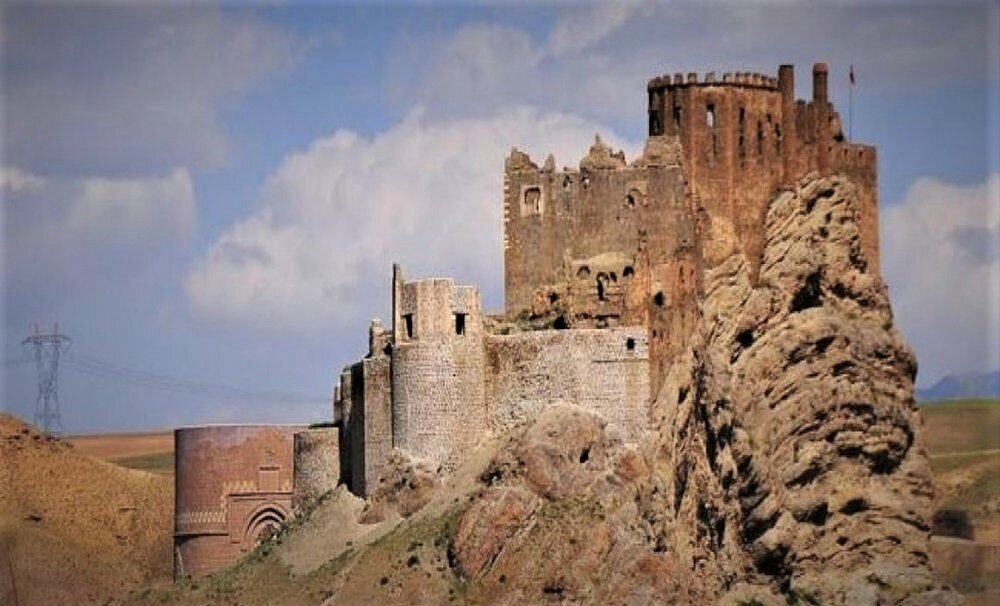Five Iranian monuments win ICESCO heritage status

TEHRAN - Five Iranian monuments have joined the cultural heritage list of the Islamic Educational, Scientific, and Cultural Organization (ICESCO), ISNA reported on Sunday.
The cultural landscape of Alamut Castle, Gonbad-e Alavian (“Alavian Dome”), Mausoleum of Sheikh Ahmad Jami, Bastam historical complex, and cultural landscape of Masouleh have been registered on the ICESCO’s Islamic World Heritage List (IWHL).
The inscriptions were announced in a letter to Iran’s Minister of Cultural Heritage, Tourism, and Handicrafts Ezzatollah Zarghami, the report added.
Headquartered in Rabat, the capital city of the Kingdom of Morocco, ICESCO is an international non-profit organization emanating from the Organization of Islamic Cooperation, specializing in the fields of education, science, and culture.
Alamut Castle
Perched on top of a steep hill, Alamut Castle was once sheltering the followers of Hasan-e Sabbah (1070–1124), the spiritual leader of a heretical Ismaili sect that spawned the word ‘Assassins’.
Meaning “eagle’s nest”, Alamut is a geographic region in the western edge of the Alborz Mountain range, between the dry and barren plain of Qazvin in the south and the densely forested slopes of the Mazandaran province in the north.
Sabbah’s rule over Alamut is shrouded in mystery and enigma; partly because most Ismaili records of the era were destroyed by the Mongols while the writings of their detractors survived.
In the early 1930s, British-Italian explorer and travel writer Freya Stark described her exploration of the place in her book “The Valleys of the Assassins”. In her celebrated 1934 travelogue, she recounts her hike up to Nevisar with mules that "seemed to be standing on their hind legs."
Gonbad-e Alavian
The 12th-century Gonbad-e Alavian (“Alavian Dome”) is located in Hamedan province and is a prime example of the Persian-Islamic architecture of the time.
The brick tower of the monument remains famous for the whirling floral stucco added in the Ilkhanid Mongol era; this ornamentation is described by British travel writer Robert Byron in his travelogue “The Road to Oxiana”. In its small cellar, there are tombs of two elders of the Alavian family. The interior area is formed of six rooms with arches. Cube-shaved graves covered with turquoise bricks are in the center.
A rectangular plaque with stucco honeycomb patterns and flower motifs is hung above the entrance of the structure. The outer frame of this plaque bears stucco reliefs of Quranic inscriptions in the Kufic calligraphy hand.
Mausoleum of Sheikh Ahmad Jami
One of the most beautiful attractions of Torbat-e Jam in Khorasan Razavi province is the Sheikh Ahmad Jami Mausoleum. Persian Sufi writer, mystic, and poet Ahmad Jami were some of the most famous of his time.
It includes several monuments, including a tomb, an iwan, a mosque, a madrasah, and a dome. Other constructions were also added to it at different points in time. Later, a cistern, an underground mosque, and some graves were built there. The entrance door of the mausoleum made of wood is engraved with a Kufic inscription, revealing its history.
Bastam historical complex
Bastam historical complex is located in the small city of Bastam, near Shahroud in the north-central province of Semnan. It includes the holy shrine of Mohammad Ibn Jafar Sadegh (AS), Bayazid Bastami tomb, Bayazid Monastery, Bayazid Mosque, Eljaito Iwan, Ghazan Dome, Jame Mosque, Kashaneh Tower, and Shahrokhieh School, which were built in different eras from the Seljuk era (1037–1194) to Qajar period (1789–1925).
The prominent Persian mystic Bayazid Bastami lived in the historical city of Bastam, which is located six kilometers north of Shahroud. The monastery was a simple place where he studied and prayed.
Masouleh
The LEGO-shaped village of Masouleh where roofs and streets become one is located in the middle of the green mountains of Gilan province, northern Iran. Stairway with a specific architecture, the houses of the village are built on each other and the roof of each house is the courtyard of his upper Neighbor.
Masouleh is estimated to date for a millennium, as the existence of numerous graveyards inner and outside of the village proves its old age.
ABU/AFM
Leave a Comment